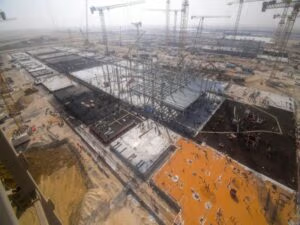China has completed its key rural road development targets under the 14th Five-Year Plan (2021–2025) ahead of time, the Ministry of Transport announced on Wednesday.
According to China Daily, the country has built or upgraded 716,000 kilometers of rural roads over the past four years, expanding the total rural road network to 4.64 million km — a 6 percent increase from the end of the 13th Five-Year Plan period.
Currently, 89.5 percent of townships are connected by Class 3 or higher-grade roads — paved and wide enough for buses and trucks — while 94.6 percent of larger villages now have access to hardened roads. Both figures surpass the goals initially set out in the plan.
At a national conference on rural road development, held in Hunan province, officials reviewed the progress of the “Four Good Rural Roads” program — which emphasizes building quality roads, effective management, proper maintenance, and efficient operations — and laid out future priorities.
Since 2021, the central government has allocated 220 billion yuan ($30.6 billion) from vehicle purchase tax funds, which in turn spurred nearly 2 trillion yuan in total social investment. More than 400 billion yuan has been directed toward road maintenance, while rural passenger transport services received 44.45 billion yuan in subsidies.
The ministry noted that China now has a comprehensive rural transport system that links townships and villages more seamlessly, offering safer, more accessible, and more inclusive services. Rural roads, it said, are increasingly supporting the country’s rural revitalization strategy.
Looking ahead, China has introduced a new plan to construct or upgrade another 300,000 km of rural roads by 2027. The initiative is designed to further enhance connectivity, strengthen road safety, and accelerate rural development. By 2035, China aims to establish a modern rural transport network that is well-structured, high quality, efficiently managed, and capable of underpinning sustainable rural growth.
(Inputs from WAM)





